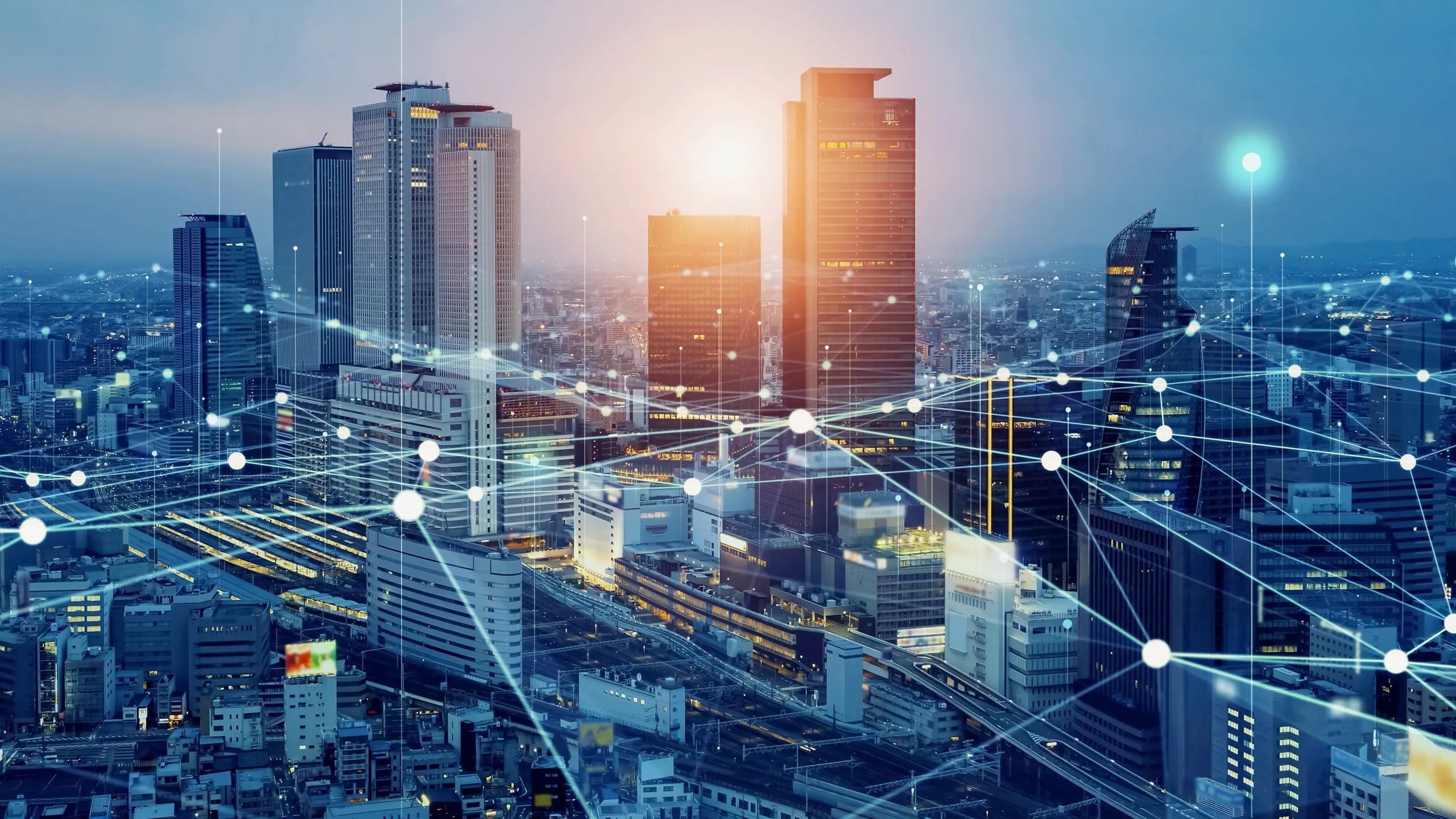Unlock the Potential of your Building
Experience the transformative power of smart buildings, where cutting-edge technology connects, analyses, and optimises every aspect of operational performance. By integrating building-wide systems into a unified IT network infrastructure powered by AI and Machine Learning (ML), buildings become programmable and incredibly responsive.
Unlock the potential of your building with smart technology, allowing for lower operational and energy costs, enhanced flexibility, and heightened awareness of space usage. With smart buildings, you can revolutionise efficiency, productivity, and sustainability, creating an environment that adapts and evolves to meet your needs.
 Enhanced Energy Efficiency
Enhanced Energy Efficiency
Significantly reduce energy consumption, and improved energy efficiency, by controlling lighting, Heating, ventilation, and air conditioning (HVAC) systems, and equipment.
 Cost Savings
Cost Savings
Through intelligent energy management and system automation, smart buildings lower operational costs and maintenance expenses.
 Occupant Comfort and Productivity
Occupant Comfort and Productivity
A tailored experience by automating temperature control, lighting adjustments, and personalised workspace setting, enhancing occupant comfort, well-being, and ultimately boosts productivity.
 Sustainability and Environmental Benefits
Sustainability and Environmental Benefits
By reducing energy consumption and optimising resource usage, smart buildings contribute to a lower carbon footprint and help organisations achieve their sustainability goals.
 Predictive Maintenance
Predictive Maintenance
Monitor the condition of various systems and equipment in real-time, by leveraging sensors and data analytics, smart buildings, allowing for proactive maintenance, reducing downtime, and improving overall reliability.
 Improved Security and Safety
Improved Security and Safety
The integration of security systems, such as access control and video surveillance, into the building management system allows for seamless protection, enhances the safety and security of occupants, assets, and infrastructure.
Transform your Building into a Smart Building
Unleash the power of data.
Get actionable insights by combining your applications and data together in one place, empowering you to make transformative business decisions.

Book a Demo
"*" indicates required fields
Explore the key components
Smart buildings rely on a combination of key components to create an intelligent and responsive environment.
 IoT devices
IoT devices
Internet of Things (IoT) devices are the building blocks. These devices are embedded with sensors and connected to the internet, allowing them to collect and exchange data. Examples of IoT devices in a smart building include smart thermostats, occupancy sensors, and smart lighting systems.
 Sensors
Sensors
Sensors play a crucial role in capturing and monitoring data. They can measure various environmental parameters such as temperature, humidity, light intensity, air quality, and occupancy. This data is essential for optimising building performance, enhancing occupant comfort, and increasing energy efficiency.
 Connectivity
Connectivity
For IoT devices and sensors to communicate and exchange data, a robust network infrastructure is required. This often includes a combination of wired and wireless connectivity options, such as WiFi. This network allows devices to transmit data to a central hub or cloud platform for further processing and analysis.
 Data analytics
Data analytics
The massive amount of data generated by IoT devices and sensors needs to be processed and analysed. Data analytics platforms use algorithms and machine learning techniques to extract meaningful insights from the collected data. These insights can help optimise building operations, predict maintenance issues, and improve energy efficiency. Data analytics also enable real-time monitoring and control of building systems.
Sustainability powered by technology
Discover how smart buildings contribute to sustainability goals, showcasing examples of renewable energy integration, waste reduction strategies, and sustainable practices enabled by smart building technologies.
Enhancing safety and security
Smart buildings leverage advanced security systems to create a safe and secure environment for occupants, protect valuable assets, and ensure the integrity of infrastructure.
 Access control systems
Access control systems
Access control systems use smart cards, biometrics, or mobile credentials to ensure authorised access, integrating with smart building platforms for centralised management, real-time monitoring, and enhanced security.
 Surveillance cameras
Surveillance cameras
Strategically placed surveillance cameras enable remote monitoring, real-time video analytics, and timely response to detect suspicious activities, enhance security, and provide valuable evidence.
 Emergency response systems
Emergency response systems
Integrated systems such as panic alarms, intercoms, and mass notification systems, allow for prompt detection, automated responses, and effective real-time monitoring to ensure occupant safety and minimise damages.
Harnessing the power of smart buildings
Smart building dashboards are a powerful tool that integrate data from different systems to provide you with a visual and easily understandable interface, including:
- A comprehensive and intuitive interface to monitor and control building operations.
- Integrated data from sensors, meters, and control systems.
- Real-time information on energy consumption, indoor air quality, occupancy levels, and equipment performance is readily accessible.
- The ability to make data-driven decisions and take proactive measures to optimise building performance and reduce energy waste.
- Interactive graphs, charts, and alerts to help monitor trends, detect anomalies, and quickly respond to issues.





